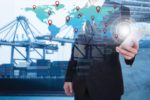
Visit Our Sponsors |
|
|
|
|
|
|
|
|
|
|
|
|
|
|
|
|
|
|
|
|
|
|
|
|
|
|
|
|
|
|
|
|
|
|
|
|
|
|

Photo: iStock/Andrey Yusenkov
President Trump’s seesawing policy on the implementation of tariffs fails to account for the many complexities of international trade, according to three industry analysts.
Jamieson Greer, Trump’s choice for U.S. Trade Representative, might be “in the weeds of understanding” the dynamics and trade and tariffs, said Scott Lincicome, vice president of general economics at the Cato Institute’s Herbert A. Stiefel Center for Trade Policy Studies. (A trade lawyer, Greer has served as chief of staff to Robert Lighthizer, Trump’s previous USTR.) “But others [in the administration],” he added, “I don’t think grasp the complexity.”
Speaking on a panel at S&P Global’s recent TPM25 conference in Long Beach, California, Lincicome addressed the “practical difficulty” of creating a system of reciprocal tariffs, matching the levels of U.S. trading partners. “It sounds simple,” he said, “but as a practitioner, it’s a nightmare.”
Lincicome described “an inherent tension between accuracy and feasibility” in the President’s aggressive new trade policy. To impose reciprocal tariffs against 200 countries, regulators would need to generate some three million lines of tariff code — a “herculean effort,” he said.
Ensuring compliance with that massive tariff regime would be equally daunting. In the past, Lincicome said, it could take years just to quantify and apply a remedial tariff to a single product or company. But Trump has signaled his intent to go far beyond a tit-for-tat policy, to include alleged non-tariff barriers such as a country’s reliance on the metric system, or alleged efforts at currency manipulation.
Tariffs imposed during the first Trump administration, mostly on goods imported from China, amounted to some $350 billion, and were spread over 18 months to two years. But Trump 2.0 has moved to slap more than $1 trillion in new tariffs on multiple countries over a matter of weeks — even to the point of affecting incoming goods that are already on the water.
What’s more, Lincicome said, Trump is overlooking the realities of cross-border manufacturing. The parts that go into a typical automobile might cross the U.S.-Canada border multiple times as the vehicle takes shape, prior to final assembly. “Half of all imports in the U.S. are for manufacturers [making product] in the U.S., and about a third is intracompany trade,” he pointed out. “Tariffs don’t account for those complexities.” In the end, “you can harm what you’re trying to help.”
Cindy Allen, chief executive officer and managing director of the consultancy Trade Force Multiplier, said at TPM25 that the trade community was “beaten down” by a 350% increase in regulatory actions in two years of the first Trump administration. “Now fast forward, and it’s a 350% increase in just two weeks,” she said. “We’re running as fast as we can.”
Making matters worse is the threat to cut staffing levels at Customs and Border Protection, part of a broader effort by Trump to slash the federal workforce to the bone. “For everyone who wants the U.S. to be run like a business, congratulations,” Allen said. “But the decision-making has disregarded all subject-matter experts.” As a result, the trade community can’t go to agency heads with questions about the real-world impact of the force reductions.
The firings “are very much driven by a small group of individuals at the White House,” Allen said. “That’s unprecedented. And it’s limited [industry’s] ability to communicate concerns in a way we’ve never seen before.”
Brian Nemeth, partner, managing director and global co-leader of logistics and transportation with AlixPartners, said advising clients on how to respond to the higher tariffs is a “day-to-day” effort. He added that tariffs tend to depress import levels for a variety of consumer products. When those imposed on solar panels and washing machines in 2018 expired in 2023, “overnight … imports shot back up,” he said.
The tariff controversy has the further effect of diverting capital spending by businesses into trade lobbying, the amount of which has recently “skyrocketed,” Lincicome said. “Those are all resources that could be spent on actual business operations.”
In the midst of this chaotic environment, companies are left scrambling for ways to cope with a regulatory shift that’s not likely to abate anytime soon, whether or not Trump makes good on all of his threats.
Trade, said Lincicome, “has always been a politically seductive policy. People don’t pay attention to it. So it’s been delegated to the technocracy.”
Efforts to manipulate trade flows for political purposes “can spiral out of control,” Lincicome said. “We’re relearning a lot of those facts.”
RELATED CONTENT
RELATED VIDEOS
Timely, incisive articles delivered directly to your inbox.

